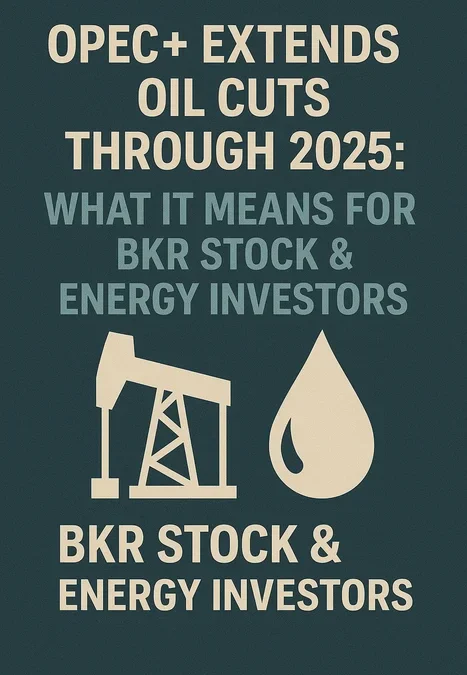OPEC+ Extends Output Cuts Through 2025: Oil Jumps 4.2%, Energy Stocks Rally
Oil Markets Surge After OPEC+ Decision
In a significant move to stabilize global oil prices, OPEC+ announced it will extend its voluntary production cuts through the end of 2025. This decision comes as demand recovery in Asia remains uneven, and geopolitical tensions add uncertainty to the energy supply chain.
Following the announcement, Brent crude jumped 4.2% to $91.80 per barrel, while WTI crude surged 4.5% to $88.10. Global energy stocks, particularly in the U.S. and Europe, responded with sharp gains.
U.S. Energy Stocks:
- Chevron (CVX): ▲ 2.9%
- ExxonMobil (XOM): ▲ 3.1%
- ConocoPhillips (COP): ▲ 2.7%
European Energy Stocks:
- Shell (UK): ▲ 3.4%
- BP (UK): ▲ 2.6%
- TotalEnergies (France): ▲ 2.8%
The S&P 500 Energy Index rose 3.2%, making it the best-performing sector for the day. European counterparts on the STOXX Europe 600 Energy Index also gained nearly 2.9%.
Details of the OPEC+ Agreement
OPEC+ — a coalition of 23 oil-producing nations led by Saudi Arabia and Russia — agreed to extend their existing production cuts of nearly 2.2 million barrels per day (bpd). Key takeaways include:
- Saudi Arabia: Maintains its 1 million bpd voluntary cut
- Russia: Keeps its 500,000 bpd cut with revised export quotas
- UAE and Iraq: Aligning with quotas after prior overproduction
This move is expected to:
- Support oil prices in the face of slowing global demand
- Reduce stockpiles in OECD countries
- Provide price stability amid Middle East tensions
Why the Cuts Matter Now
1. Demand Uncertainty
China’s uneven economic recovery and sluggish demand in Europe have pressured oil prices in recent quarters. The extension is designed to balance the market without oversupply.
2. Geopolitical Risks
Ongoing instability in the Middle East, including conflicts involving Iran and potential blockades of the Strait of Hormuz, pose risks to supply that OPEC+ wants to preemptively manage.
3. Price Targeting
OPEC+ aims to keep Brent crude above $85/barrel — a price point that benefits both state revenues and upstream investments, without harming global consumption drastically.
Impact on Sectors and Consumers
Energy Sector:
- Oil producers benefit from higher margins
- Oilfield service providers may see increased contracts
- Exploration and drilling activity expected to rise in Q4
Airlines and Transport:
- Higher fuel prices squeeze margins
- European budget airlines like Ryanair and Wizz Air declined by 2–3%
Industrial Firms:
- Input costs may rise, impacting chemicals and manufacturing
Consumers:
- Potential increase in fuel and utility bills
- Food logistics and shipping could also see cost bumps
What Investors Should Watch
- U.S. crude inventory reports and shale production trends
- China’s monthly import data for crude and LNG
- OPEC’s next meeting in December 2025
- Earnings guidance from energy giants in Q3
What About Renewables?
Some renewable energy stocks saw minor declines, as higher oil prices may reduce urgency for immediate transition. However, long-term policy support keeps their outlook stable:
- NextEra Energy (NEE): ▼ 0.8%
- Vestas (Denmark): ▼ 1.1%

